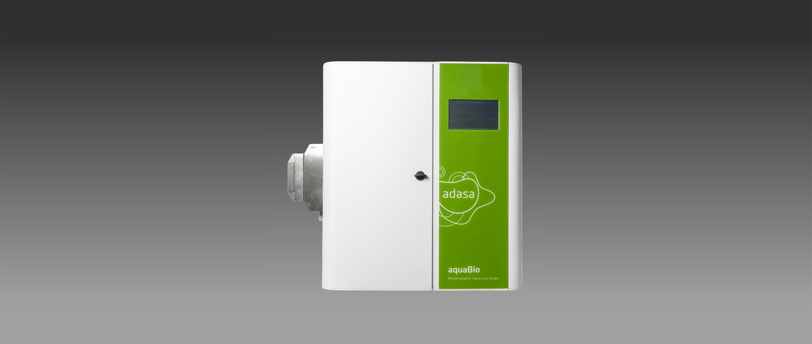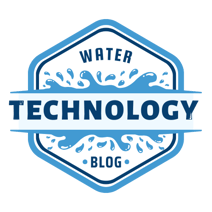Defined Substrate Technology for Online Microbial Measurement: Revolutionizing E. coli Detection
Water quality monitoring is critical for ensuring public health and environmental safety. Among the many methods available, Defined Substrate Technology (DST) has emerged as a game-changer for online microbial measurement, particularly for detecting Escherichia coli (E. coli). This blog post explores how DST works, its ability to meet health standards, and how it compares to traditional laboratory agar plate methods, offering a modern solution for rapid and reliable water quality assessment.
WATER PURIFICATIONINSTRUMENTATION
5/21/20254 min read


Defined Substrate Technology is an innovative approach to microbial detection that uses specific substrates to identify and quantify microorganisms like E. coli and total coliforms in water samples. Unlike traditional methods that rely on culturing bacteria on agar plates, DST employs enzyme-substrate reactions to produce measurable signals, such as color changes or fluorescence, when target bacteria are present.
One of the most well-known DST systems is the Colilert Test by IDEXX, which uses nutrient-indicators like ONPG (ortho-nitrophenyl-β-galactoside) for coliforms and MUG (4-methylumbelliferyl-β-D-glucuronide) for E. coli. When these substrates are metabolized by the target bacteria, they produce a yellow color for coliforms or fluorescence under UV light for E. coli, enabling rapid detection within 24 hours.
DST is particularly suited for online microbial measurement systems, which continuously monitor water quality in real-time. These systems, like those developed by companies such as Adasa Systems, integrate automated sampling, reagent addition, and detection to provide immediate results without the need for manual laboratory processing. This makes DST ideal for applications in drinking water treatment, wastewater management, and environmental monitoring.
How Does DST Work for Online Microbial Measurement?
In an online microbial measurement system, DST operates as follows:
Sample Collection: Water samples are automatically collected from the source, such as a river, reservoir, or treatment plant.
Reagent Addition: The sample is mixed with a defined substrate reagent, such as those used in the Colilert system, which contains specific nutrients that target bacteria like E. coli metabolize.
Incubation and Detection: The sample is incubated at a controlled temperature, allowing bacteria to metabolize the substrate. The resulting color change or fluorescence is detected by optical sensors, indicating the presence and concentration of E. coli or coliforms.
Data Transmission: Results are transmitted in real-time to a central system, enabling immediate action if contamination is detected.
This automated process eliminates the need for manual sample transport and laboratory analysis, making it faster and more efficient than traditional methods. Systems like Adasa’s AquaBio leverage such technologies to provide continuous, real-time water quality data, ensuring rapid response to contamination events.
Does DST Meet Health Standards?
Health standards for drinking water, such as those set by the World Health Organization (WHO) and the United States Environmental Protection Agency (USEPA), require that E. coli and total coliforms be absent in potable water to ensure safety. The USEPA’s Revised Total Coliform Rule (RTCR), for example, sets a maximum contaminant level goal (MCLG) of zero for E. coli in drinking water, as its presence indicates potential fecal contamination and health risks.
DST methods, such as the Colilert Test, are USEPA-approved for detecting E. coli and total coliforms in drinking water. Since 2002, the USEPA has approved ten enzyme-based tests, including DST, for their reliability and sensitivity. These tests meet stringent health standards by providing accurate detection of E. coli at low concentrations, often within 24 hours, compared to the 48–72 hours required for traditional methods.
Moreover, DST’s specificity ensures minimal false positives, as it targets enzymes unique to E. coli (e.g., β-glucuronidase) and coliforms (β-galactosidase). This makes it highly effective for compliance with health regulations, particularly in drinking water systems where rapid detection is critical to prevent outbreaks of waterborne diseases like gastroenteritis.
In online systems, DST’s integration with automated monitoring ensures continuous compliance with health standards. For instance, Adasa Systems’ solutions, which incorporate similar technologies, provide real-time alerts when E. coli levels exceed safe thresholds, enabling immediate corrective actions to protect public health.
Comparing DST to Traditional Lab Agar Plate Measurements
Traditional laboratory agar plate methods, such as membrane filtration or the Most Probable Number (MPN) technique, have long been the gold standard for microbial testing. However, DST offers several advantages, particularly for online monitoring. Below is a comparison of the two approaches:
1. Speed
DST: Provides results in 24 hours or less, making it ideal for real-time monitoring. Online systems can deliver near-instantaneous results, depending on the setup.
Agar Plate Methods: Typically require 48–72 hours for bacterial colonies to grow and be counted, delaying response times.
2. Ease of Use
DST: Requires minimal equipment and technical expertise, as the process is automated in online systems or simplified in kits like Colilert. It’s also suitable for non-specialists, such as citizen scientists.
Agar Plate Methods: Involve labor-intensive steps, including serial dilution, plating, and incubation, requiring skilled technicians and controlled laboratory conditions.
3. Accuracy and Specificity
DST: Highly specific, using enzyme-substrate reactions to target E. coli and coliforms with minimal interference from other microorganisms.
Agar Plate Methods: Reliable but prone to overgrowth by non-target bacteria, which can obscure results. Chromogenic or fluorogenic agar media improve specificity but are still less targeted than DST.
4. Cost
DST: Can be more cost-effective for high-throughput or continuous monitoring, as it reduces labor and equipment costs. However, proprietary reagents (e.g., Colilert) may increase costs for smaller-scale testing.
Agar Plate Methods: Generally less expensive for reagents but require costly laboratory infrastructure and trained personnel, increasing overall costs.
5. Real-Time Monitoring
DST: Excels in online systems, enabling continuous, automated monitoring with real-time data transmission, as seen in platforms like Adasa’s AquaBio.
Agar Plate Methods: Unsuitable for real-time applications due to the need for manual processing and extended incubation periods.
6. Limitations
DST: May not enumerate bacterial concentrations as precisely as agar-based methods in some cases, particularly for high bacterial loads. It’s also dependent on proprietary reagents, which can limit accessibility.
Agar Plate Methods: Provide precise colony counts but are time-consuming and less practical for remote or continuous monitoring.
Studies have shown that DST methods, like Colilert, correlate well with traditional agar-based methods for E. coli detection in municipal water, with comparable accuracy for regulatory compliance. However, for applications requiring detailed enumeration (e.g., research), agar plates may still be preferred.
The Future of Microbial Monitoring with DST
Defined Substrate Technology represents a significant advancement in microbial water quality monitoring, particularly for E. coli detection. Its integration into online systems, like those offered by Adasa Systems, allows for rapid, automated, and reliable monitoring that meets stringent health standards set by organizations like the WHO and USEPA. Compared to traditional agar plate methods, DST offers faster results, greater ease of use, and the ability to perform real-time monitoring, making it a superior choice for modern water management.
As water quality challenges grow due to climate change and population pressures, technologies like DST will play a crucial role in ensuring safe drinking water and protecting public health. By combining scientific precision with practical automation, DST is paving the way for a new era of environmental monitoring.
For more information on advanced water quality monitoring solutions, visit Adasa Systems or explore USEPA-approved methods at EPA.gov.
This blog post highlights the transformative potential of Defined Substrate Technology while addressing its compliance with health standards and its advantages over traditional methods. By leveraging real-time capabilities, DST ensures safer water for communities worldwide.
